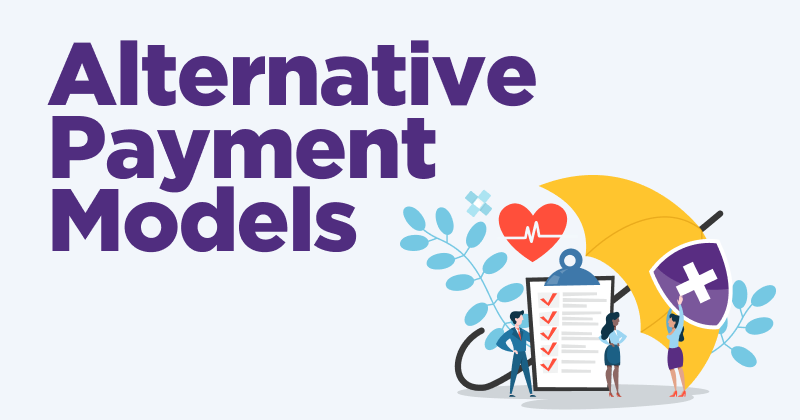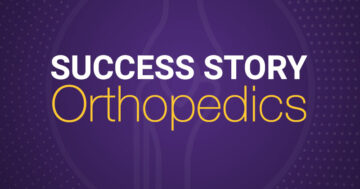What Are APMs in Healthcare?

Alternative payment models are payment programs that focus on value-based care as part of payment model categories designed to further CMS objectives for quality of care, cost and interoperability
Physician offices and clinics can benefit by having a thorough understanding of how alternative payment models (APMs) work and how to optimize processes to ensure compliance and reduce administrative burdens. APMs are part of the Quality Payment Program (QPP) under the Medicare Access and CHIP Reauthorization Act of 2015 (MACRA). Under QPP, physicians are accountable for achieving specific performance measures that contribute to industry-wide priorities, like quality of patient care, costs to deliver care and interoperability.
This knowledge is important because practices that adopt an alternative payment model agree to be paid under the rules of that model. Your practice’s income may be directly tied to your ability to optimize your workflows and outcomes according to the relevant model. Here, you can discover how APMs work and learn more about how our MIPS advisory services for our EMA® EHR and gGastro® EHR clients can help you meet your value-based care goals.
Types of Alternative Payment Models
The type of alternative payment model that applies to your practice may depend on a variety of factors, including your practice specialty and other details about how you provide care. For example, an orthopedist may join an APM designed to improve care for lower extremity joint replacements,* while a pain management physician may join a model that addresses the care of pregnant and postpartum Medicaid patients with opioid use disorder.**
Each model directs service delivery and payment so that the healthcare system as whole can build practices and processes that are higher quality, more affordable, patient-centered and equitable.
The Centers for Medicare & Medicaid Services have created seven model categories.† Each category drills down into narrower models, each with their own relevance to certain specialties and their own specifications for performance indicators.
- Accountable Care Organizations (ACOs): ACOs are groups of doctors, hospitals and other providers that work together to provide coordinated care to their Medicare patients. They may be accountable for a specific patient population and for investing in infrastructure that supports the delivery of efficient care. ModMed® can help ACOs with interoperability reporting requirements. Our centralized EHR is able to gather and report data securely, relieving your staff of the burdensome work of manual reporting.
- Episode-Based Payment Initiatives: Providers focus on quality of care and other measures within the parameters of an episode of care, which may begin with a healthcare event, like a hospitalization or other trigger. The episode may extend for a limited period of time, during which care is measured on quality, cost and other performance indicators.
- Primary Care Transformation: Under this model, primary care providers act as the point of contact for a patient’s healthcare demands. These practices may also be called medical homes, and they act as a critical component in streamlining healthcare and reducing overall healthcare costs. At each primary care practice, the focus is on prevention, coordination of care and shared decision-making, including the use of healthcare technology platforms, APIs, and other interoperability measures.
- Initiatives Focused on the Medicaid and CHIP Population: This model is administered by a state participating in Medicaid and the Children’s Health Insurance Program (CHIP).
- Initiatives Focused on the Medicare-Medicaid Enrollees: This model aims to address patients who are enrolled in both Medicare and Medicaid programs to help integrate the purposes of the two programs, while ensuring patient needs are met in a cost-effective manner.
- Initiatives to Accelerate the Development and Testing of New Payment and Service Delivery Models: You can think of this APM as a specialized form of beta testing. CMS recognizes that innovation drives improvements in the healthcare system, so local and regional providers can partner with CMS to accelerate the testing of models that may lead to significant breakthroughs for the future.
- Initiatives to Speed the Adoption of Best Practices: Under this model, healthcare providers partner with CMS’ Innovation Center to help surface new, research-backed best practices faster than studies indicate it usually takes.
How Advanced APMs Work
An Advanced Alternative Payment Model is a version of an APM, with a few additional qualifying criteria.
The first is the required use of certified electronic health record technology. At ModMed, our certified EHRs are designed to be specialty-specific. That means that you can reap the benefits of centralization and automation without the hassles of other EHRs that require template customization or scrolling through irrelevant clinical diagnoses, insurance codes, etc.
Additionally, an advanced alternative payment model bases payments on quality measures similar to MIPS performance categories: quality, cost, improvement activities, and promoting interoperability. Further quality measures include:
- Measures endorsed by a consensus-based entity, like the National Quality Forum (NQF)
- Measures submitted in the Annual Call for Measures
- Measures developed with QPP Measure Development funds
- Measures determined by CMS to meet standards
Advanced APMs also require that participating entities incur some of the financial loss when actual expenditures exceed projected expenditures. For medical home models, this risk requirement is met if repayment is required when there is either excess spending or failure to meet performance requirements.
Under advanced APMs, your practice’s eligibility may also depend on bearing greater financial risk for monetary losses or acting as a medical home under CMS’ innovation directives.
APMs and MIPS
APMs and MIPS are two tracks determining payment for physicians under MACRA. MIPS uses a series of data-driven performance indicators to score a provider’s delivery of value-based care as part of MACRA’s Quality Payment Program. Clinicians who participate in APMs may be exempt from MIPS, although there are also MIPS APMs that participate in APMs and are still eligible for scoring benefits under MIPS.
What Is the Purpose of APMs?
Alternative payment models, like MIPS, are part of a larger shift in the healthcare industry to value-based care. Both represent a change in how physicians are reimbursed by tying payment to quality, rather than quantitative incidences of care. Another purpose of APMs and value-based care is to disrupt and prevent complexities that can arise from fee-for-service payments.
Fee-for-service payments can result in fragmented care that financially incentivizes a higher number of tests, procedures, and visits. APMs and MIPS reward providers for contributing to higher quality of care and for helping keep costs under control for everyone.
Streamlining Your Workflows
You can help your practice optimize its APM processes by working with ModMed. Our certified EHR makes it faster and easier to collect data and report on measures that are part of your specific alternative payment model. With a broad API marketplace and other export tools, automation and connectivity replace manual data sharing methods. For larger practices, where data sets may be massive and continually growing, ModMed’s scalability helps you keep everything under control. For more help with your alternative payment models, reach out to ModMed for information about MIPS Advisory Services.
*Centers for Medicare & Medicaid Services: Comprehensive Care for Joint Replacement Model, October 4, 2022
**Centers for Medicare & Medicaid Services: Maternal Opioid Misuse (MOM) Model, February 16, 2022
†Centers for Medicare & Medicaid Services: Innovation Models
This blog is intended for informational purposes only and does not constitute legal or medical advice. Please consult with your legal counsel and other qualified advisors to ensure compliance with applicable laws, regulations and standards.


